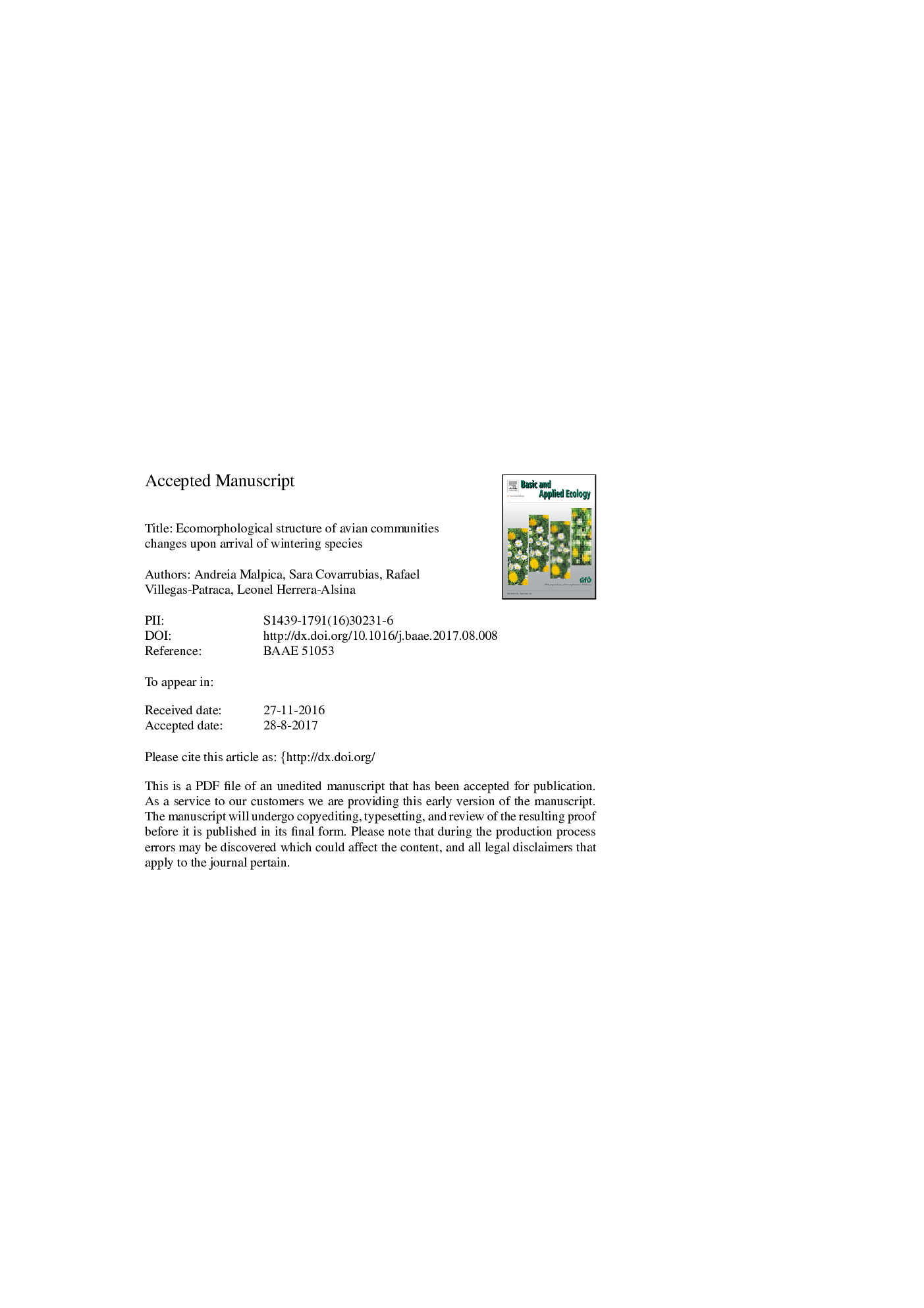| Article ID | Journal | Published Year | Pages | File Type |
|---|---|---|---|---|
| 8847068 | Basic and Applied Ecology | 2017 | 27 Pages |
Abstract
Community composition reflects evolutionary and ecological processes such as diversification and species assortment. Communities are generally considered to be saturated, which means that the number of species is maximized and that regulatory mechanisms, such as interspecific competition, prevent the addition of new species. In the tropics, however, species numbers of local bird assemblages double up each winter after the arrival of migratory species, which suggests that a rearrangement of niches occurs. Here ecological space is defined by morphological traits that reflect the ecological position of species, to describe changes in the structure of local communities. We found that the average morphological distance between species was reduced, and the volume (the total extent of trait space) was expanded with the arrival of migrants, indicating that newcomers occupy the periphery and the interior of the available ecological space. Furthermore, with greater morphological differences between resident species, higher numbers of migratory species can take advantage of free space and potentially exploit unused resources due to their intermediate morphology. We highlight the differences in the attributes of resident versus migratory species that may allow both to be accommodated in the morphological space, and we suggest coexistence theory as a possible explanation for the co-occurrence of similar species.
Related Topics
Life Sciences
Agricultural and Biological Sciences
Animal Science and Zoology
Authors
Andreia Malpica, Sara Covarrubias, Rafael Villegas-Patraca, Leonel Herrera-Alsina,
